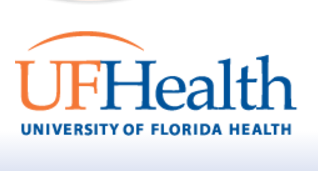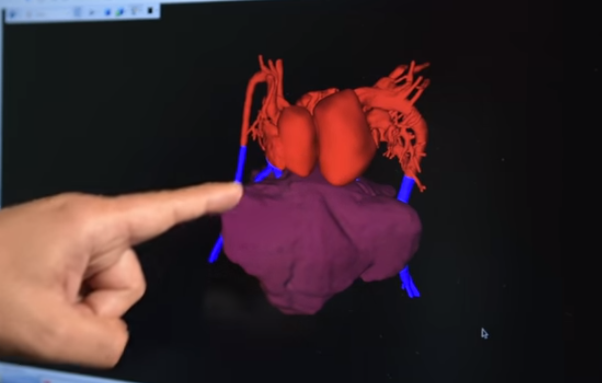Conjoined Twins with Rare Atrial Attachment are Successfully Separated Thanks to 3D Printed Cardiac Model
 It’s a wonderful thing to report that the use of 3D printed models in the medical field has become almost commonplace. And it’s certainly an understatement to say the stories we follow are heartwarming, as we’ve seen children’s lives changed, adults being given their lives back after new and successful treatments, and surgeries being completed when other doctors said it wasn’t possible, such as in the case of a spleen that was saved due to 3D printing. There have been many, many firsts regarding 3D printing and medicine, and it’s uplifting to know that still many more will follow. It’s got to be hard to top creating the first 3D printed conjoined twin heart, however.
It’s a wonderful thing to report that the use of 3D printed models in the medical field has become almost commonplace. And it’s certainly an understatement to say the stories we follow are heartwarming, as we’ve seen children’s lives changed, adults being given their lives back after new and successful treatments, and surgeries being completed when other doctors said it wasn’t possible, such as in the case of a spleen that was saved due to 3D printing. There have been many, many firsts regarding 3D printing and medicine, and it’s uplifting to know that still many more will follow. It’s got to be hard to top creating the first 3D printed conjoined twin heart, however.
As Jennifer Co-Vu, M.D., FAAP studied two female conjoined twins who were born at UF Health Shands Hospital in April, she was able to give some very nervous parents the news they needed to hear before birth: the babies would most likely survive being born as well as thereafter. Dr. Co-Vu explained to the parents, Jacquelyn and Mark, that they would then be facing whether or not to decide on surgery to separate them, or to commit themselves to a life of raising the twins in their conjoined state. This came on the heels of just learning that Jacquelyn was carrying twins. Up until her 20th week, she was under the impression she was pregnant with one child. And once it was discovered by another doctor that she was indeed carrying conjoined twins, she was given a very negative and dire prognosis. They were told that more than once.
Dr. Co-Vu began studying the babies as early as Jacquelyn’s 21st week of pregnancy.
“We went in to find the sex of one baby, and found out not only were they twins, but they were conjoined and weren’t going to make it,” Jacquelyn said. “Many opinions later, we found Dr. Co-Vu, and she told us not only were our twins going to live, but they thought they could separate them.”
 Dr. Co-Vu and her team performed both cardiac CT and MRI scans while the twins were still in the womb as well as after birth. While that might seem amazing in itself, still, the medical team was also able to construct a 3D model of the babies’ heart—and one that was certainly out of the ordinary.
Dr. Co-Vu and her team performed both cardiac CT and MRI scans while the twins were still in the womb as well as after birth. While that might seem amazing in itself, still, the medical team was also able to construct a 3D model of the babies’ heart—and one that was certainly out of the ordinary.
“When I saw the heart structures and liver structures in utero, I had a feeling that we could separate them, but I had to examine the anatomy more closely and consult with my cardiology colleagues at the UF Health Congenital Heart Center,” said Dr. Co-Vu, director of the Fetal Cardiac Program. “I was able to give them hope, yet at the same time, I told them I was cautiously optimistic. … We are very fortunate that this was a success.”
Obviously it took quite a team to carry this journey through from beginning to end. And while you may have heard of conjoined twins being separated before—even with the use of 3D printed models previously as well—this is still a very rare and delicate surgery. While each of the girls had her own set of organs, they had a thoraco-omphalopagus connection too, meaning they were joined by the liver, diaphragm, sternum and heart.
Mark Bleiweis, M.D., chief of pediatric and congenital cardiovascular surgery at UF Health, explained that the heart was the most crucial element to consider in surgery due to the twin’s atrial attachment.
“It was a really complex connection because it was close to very important veins in the hearts of both babies,” Dr. Bleiweis said. “In the world, there have not been many successful separations with a cardiac connection. It became a very challenging planning process for us, and, ultimately, a challenging separation.”
In viewing the replica, the team (to include Dr. Co-Vu, Dr. Bleiweis and other medical professionals from the pediatric cardiac intensive care unit, radiology, neonatology, maternal fetal medicine, anesthesiology and plastic surgery) was able to make a surgical plan with three different phases: pre-op, the separation itself, and post-op care. Statistically, the odds were against them, but then again, the odds were not great to begin with, and they’d already made it from April to June, with the rare atrial connection going against them as well—often a reason not to operate. There was another complication too. The twins also shared a fused liver.
“The liver, from all of the imaging we obtained both before the babies’ birth and after they were born, indicated that it was almost like one giant liver without any true plane of separation,” said Saleem Islam, M.D., M.P.H., chief of the division of pediatric surgery in the UF College of Medicine.
This required another complicated strategy during the surgery, calling for an intraoperative ultrasound which allowed the surgeons to seek areas of the liver not involving large blood vessels. The surgery took nearly eight hours and required the following:
- Pediatric surgery team with two surgeons
- Cardiothoracic surgery team with two surgeons
- Two pediatric cardiac anesthesiology teams
- Pediatric cardiac imaging team
- Multiple nursing and ancillary staff
Including that surgery, the twins have survived twelve surgeries so far, and they will be going home soon.
“I know that Mark and Jackie were told by many not to pursue this because it was daunting, and it could not and would not be successful,” Bleiweis said. “Nothing gives us greater satisfaction than seeing the two twins separated, and to see both parents holding their twins.”
“The outlook is extremely optimistic,” Bleiweis concluded.
Discuss your thoughts on this rare and incredible surgery in the 3D Printed Twin Heart Model forum over at 3DPB.com.
[Source / Images: UF Health]Subscribe to Our Email Newsletter
Stay up-to-date on all the latest news from the 3D printing industry and receive information and offers from third party vendors.
You May Also Like
3D Printing News Briefs, April 13, 2024: Robotics, Orthotics, & Hypersonics
In 3D Printing News Briefs today, we’re focusing first on robotics, as Carnegie Mellon University’s new Robotics Innovation Center will house several community outreach programs, and Ugogo3D is now working...
Rail Giant Alstom Saves $15M with 3D Printing Automation Software 3D Spark
3D Spark has entered into a three-year deal with the rail giant Alstom. Alstom, a transport behemoth with annual revenues of $16 billion, specializes in the manufacture of trains, trams,...
Meltio Expands Global Reach with New Partnerships in the Americas and Europe
Spanish 3D printing manufacturer Meltio has expanded its sales network across the globe. With the addition of three new partners in the United States, Brazil, Argentina, and Italy, Meltio aims...
3D Printing Webinar and Event Roundup: April 7, 2024
Webinars and events in the 3D printing industry are picking back up this week! Sea-Air-Space is coming to Maryland, and SAE International is sponsoring a 3D Systems webinar about 3D...




































